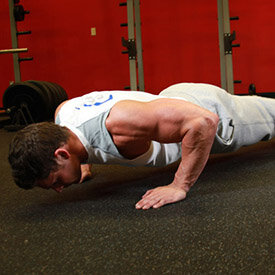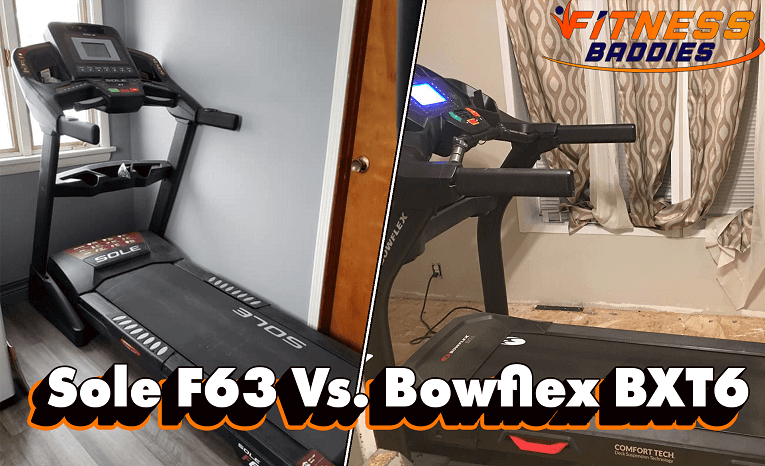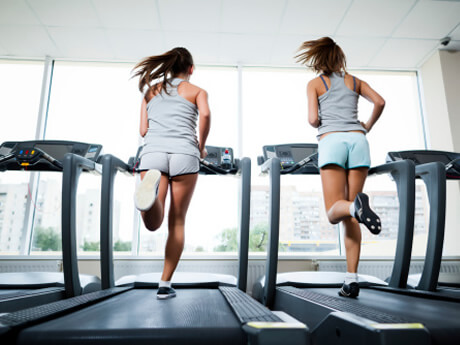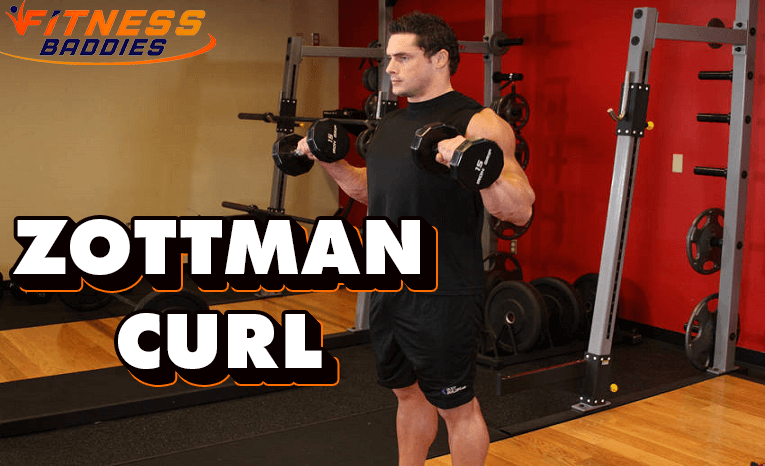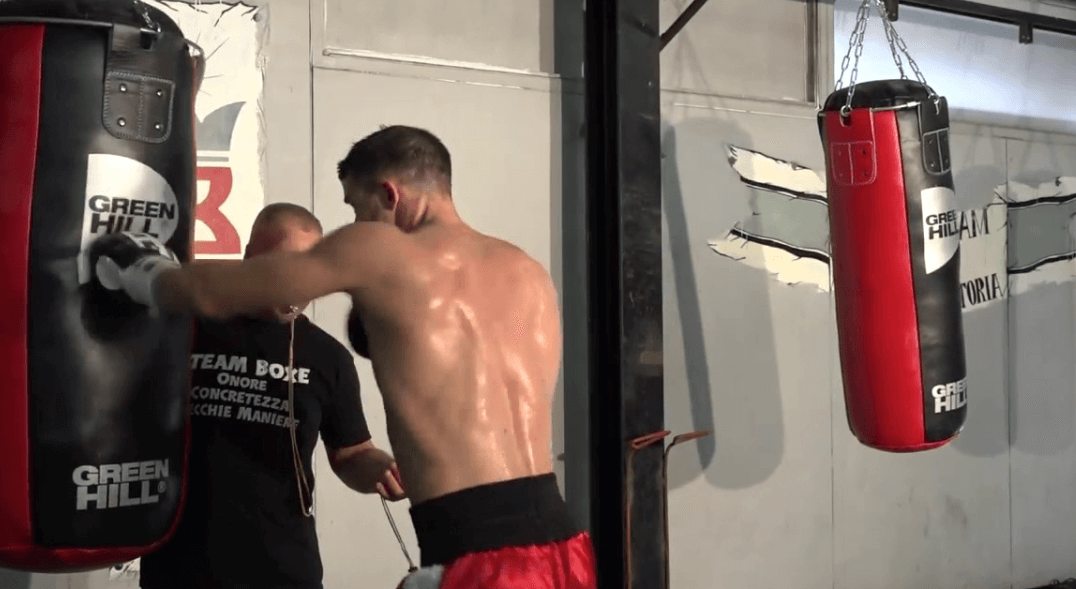What to Do When You Can’t Squat Deep, Benching Hurts, and Deadlifts Terrify Your Back
I see you. Home alone, facing the wall in shame as a YouTube video of someone with massive lift numbers bangs out those reps and a sexy logo finishes it off as the music fades into the background. You clicked on it for some motivation, but all it reminds you of is how you can’t do any of that yet. You slowly turn around, scared to see if it is done, sit back down hunched over your computer, and contemplate your own weakness. Those lifters seem like they are from another world. Every time you go to squat and deadlift, you shake in terror, gritting your teeth to “get it right,” and dreading the aches and pains to come. The treadmill beckons; the soothing cardio hoolahoop class starts looking more and more appealing, and you wonder if “lifting heavy” is really for you. After all, everyone is different. Maybe all those trainers have never come across someone as muscle-less and unflexible as you. They have never encountered your brand of uncoordination before. They have never seen your special combination of injury issues. Where are the motherf–king toned muscles you promised me if I lifted heavy?!
Sound familiar?
The more I train, the more I realize that the basics are best. But unless you can move well, jumping into what we think of as “traditional” lifts in all their traditional glory (barbells! deadlifting from the floor! squatting to full depth!) might not be possible and/or very discouraging at least in the beginning.
What can you do when you can’t do the big lifts the way everyone else seems to be doing them?
Substitute.
The great thing about the big lifts is that they are also big movements whose effects are not strictly pigeon-holed into JUST doing a squat, press, or pull a certain way. You can get the same effect on your body by moving in similar ways, but also avoid injury, work with your shitty/old joints, give yourself time to work on stability/mobility issues, and leave you feeling successful after a workout.
How you move will affect everything, including your assthetics (see what I did there?).
Get rid of the attitude that you “have” to do anything one way. You can’t get to deadlifting 225 until you first deadlift 150 and 175. Using the premise that there is something specific you “should” do, if it is not helping your progress, will ruin the entire framework of your training. Get rid of that mindset. Just forget it. It’s not important. For a great rundown of some actual “Rules of Training,” check out Bret on it here.
The 8 Laws of Strength Training
You know the principles as a beginner:
- Focus on the big compound movements and progressive overload.
- Stick to a moderate rep range that allows you to get in enough time under tension, avoiding extremes such as high rep, light weight or low rep, heavy weight, and form breakdown. 5-8 is good.
- Work on your form and good movement, so you don’t have to “fix it” later. Taking more time to learn in the beginning saves you time later when you could be doing some awesome stuff.
No one moves perfectly all the time, but good movement is the foundation. The shape and strength of your muscles is based on moving correctly so that the muscles are moving the loads, protecting your joints, and being stimulated to get stronger.
I continue to learn many lessons on how to move well. After years of injuries and frustrated attempts at progress in certain sport endeavors, I am still learning the lesson of good movement. I had the chance to have an intern from Cressey Performance assess me, and not only give me feedback, but write a program to help get me back to neutral and fix some nagging issues in how my body is used to doing things. Thanks, Miguel Aragoncillo (check out his blog, he is a smarty pants).
Miguel Aragoncillo – Strength Coach and Personal Trainer
After three months of very high-volume squatting (which was great fun), my goal is to balance out my body, so I can continue to reach even bigger strength and physique goals, injury-free. Nothing clears your mind like focus and hard work. But hard work should also be smart work.
So what are some good moves you can use as progressions to the squat, bench, deadlift, and pullup? If you have stalled in your learning process and are dealing with more pain then progress, consider switching out a big lift for one of its variations.
The Squat
The squat is a sitting-down movement. Full daily squats are extremely taxing on the body and demand high levels of coordination, stability, and power. A PERFECT lift for anyone wanting to get stronger – except when you suck at doing them. Check out these substitutions and work with what your weaknesses are until they no longer keep you back.
If you have big problems with the following in a squat …
- Buttwink
- Hack Squat
- Low back soreness
- Knee Valgus (knees cave in)
- Rocking forward on your toes, can’t sit back
- Can’t break parallel
- Tight ankles, feet turn out as you get low
- Collapse forward as you come down, aka can’t keep your chest up
Then consider the following (as you work on mobility):
Box Squats
Box squats will keep you a bit higher, but stop you from “losing” it at the bottom where your low back “winks” and you lose that lumbar curve. Keeping that integrity of upper back, core/abs, and low back as you pump that weight up and down is super important. Box squats will feel more hip dominant (ass/hams) but help you work on that “integrity” of the movement by removing the loose bottom portion, letting you practice sitting back into your hamstring and glutes. Box squats are good for building power out of the bottom of the squat and building big legs.
- Use your usual squat stance, not super wide. This will mean your “practice” will carry over into your regular squat.
- Don’t “sit down” into the box. Kiss it with your crotch and come back up in one piece. Try not to rock forward coming up. Touch and go. Keep the spine, chest, abs, and back super tight and moving together.
- Don’t use a box too high or too low. One slightly at or above parallel.
Split Squats

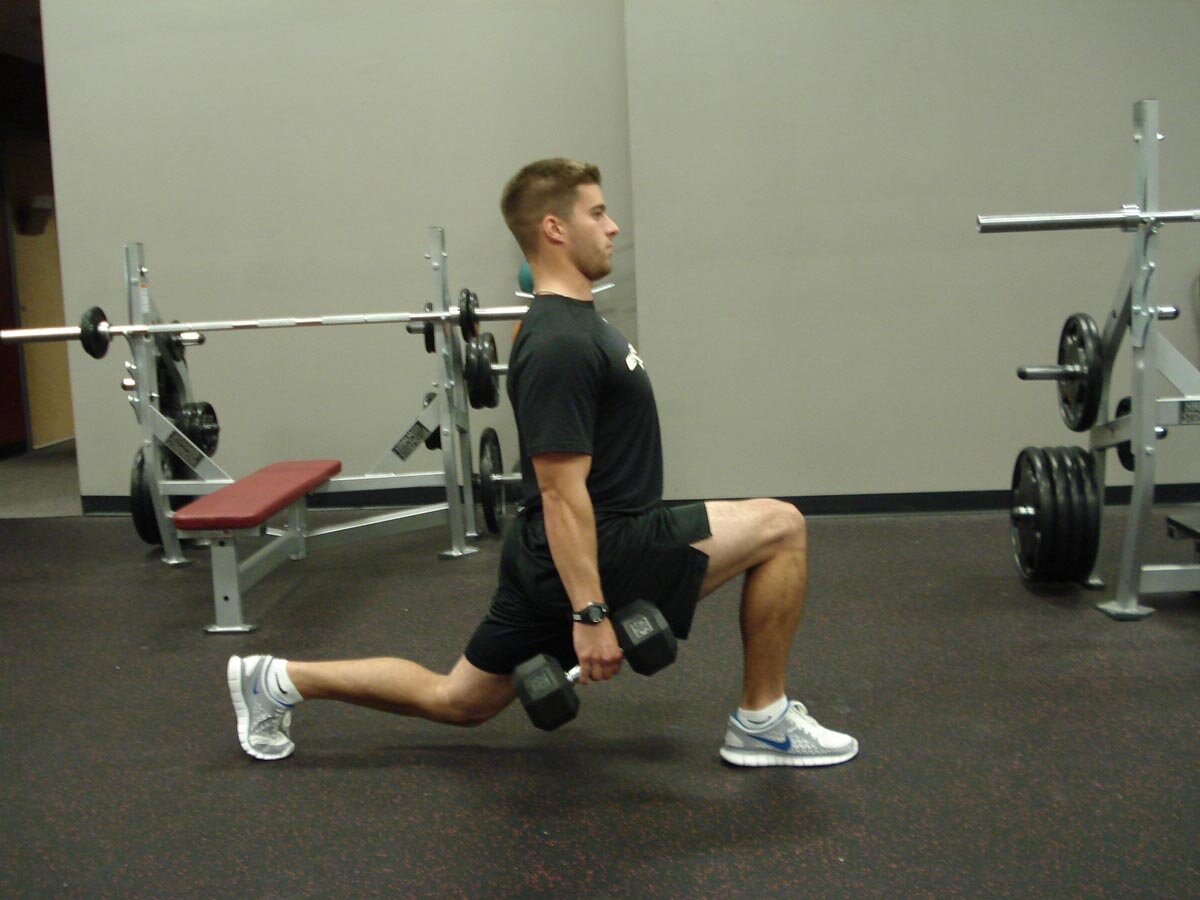
Split squats put you in a lunge position. You can do these with your foot on the floor just like the one directly above, or with your rear foot elevated laces down on a bench or box. These are great when everything seems to be against you, ankle flexion, low back, weak core, bad bar positioning on your back. You can load these pretty good with dumbbells, and since it is single-leg work, the intensity and muscle recruitment will stay high. If in doubt, check out Bret and Jonathan Fass go over the research of the bilateral vs. unilateral squat. Bottom line: Single leg squats are just as good as far as we can tell. Use them when a bilateral squat is not the best idea yet.
- Get in a rear lunge position. Front knee should be stacked over your front ankle. Keep that front shin vertical.
- Stay straight, move straight. Don’t “lean” over your front leg.
- Don’t bounce.
- Push through that front heel HARD.
Trap Bar Deads or Trap Bar Rack Pulls
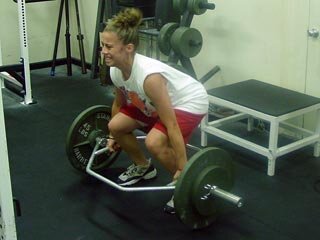
I use trap bar deads SO much in training my young athletes. They are like a hybrid squat/deadlift that allows you to hit the legs heavy without crazy form considerations. I see their form “clean up” and coaching cues can be cut down while still going heavy enough to get the benefits. Focus on keeping the chest up, weight in the heels, coming up in one piece. Since the weight is in line with you, not in front, the leverages are easier.
- Keep a deadlift stance (feet under hips) or slightly wider.
- Sit down into it, chest up, ass out, tight in the core. Lead with the chest like a regular deadlift.
- Stand straight up, keep the movement straight, squeeze your ass hard at the top.
The Deadlift
Rack Pulls or Box Deadlifts

Basically a shorter range deadlift, and they make getting into position easier. This shortens the pull movement and focuses on the lockout portion. If you have trouble getting down into the start position for a deadlift, work up to it. The setup is the same as your regular deadlift.
- All your usual deadlift technique applies. Lead with the chest, bar close to the legs as it comes up, pull back strong, lock out strong.
Kettlebell and Dumbbell Deadlifts
While not as intensive as full deadlifts, you can work the glutes and hamstrings really well by using a kettlebell or heavy dumbbell between your legs. These can help again with practicing getting into the deadlift setup with good form if the weight in front of you still throws you off-balance or you find that your deadlift setup just sucks all around. They are also a great butt exercise. With the weight staying right between your legs (center of gravity), you can focus on getting a good hip movement and keeping the chest up.
- Since you can’t lift as heavy with these (though you can definitely be challenged if you have access to heavy kettlebells, double up on kettlebells or heavy dumbbells), focus on good movement (hip hinging, core tight, back tight) and higher reps.
- Squeeze your glutes hard at the top.
- Keep the weight moving between your feet in a straight line and sit back into your butt.
- Let your hips initiate and finish the movement. Think that your arms are dead holding on to the weight, and your ass needs to move it up and down.
Trap Bar Deadlifts (see above)
The Bench Press
Dumbbell Bench
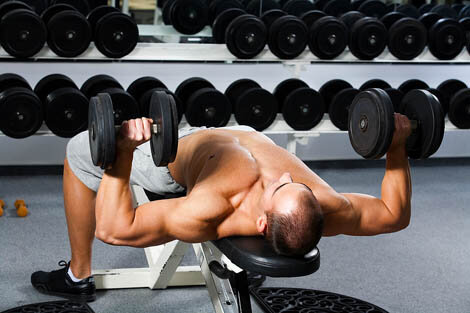
Control is SUPER important. You see that shoulder just waiting to be yanked around at the bottom of the lift? Dumbbells allow you to work each arm on its own per se, which can help clean up imbalances. You can also use less weight and do single arm as well to work on controlling the movement better. I find that being at an incline makes it a bit easier to focus on the lift. There’s something about being flat on your back that changes peoples perception of whats going on especially if they have never lifted before. That’s purely anecdotal.
- Keep your feet flat, arch your lower back a tad, but keep your stomach tight aka ribs down.
- Keep the same angle you normally do for bench. Not too wide, not to narrow. Happy medium so that your elbow and shoulder joints are happy with each other, and the head of your humerous (shoulder bone) isn’t just curving forward in the socket. We want to avoid that.
- The first thing people notice with dumbbells is how much they wiggle. Focus on control throughout the whole movement.
- Squeeze your scapula back and down into the bench. Stay tight on the way down, don’t let gravity control the eccentric portion and don’t bounce out of the bottom.
Pushups
Pushups are awesome. Real pushups are hard. Not the kind where your hips are sagging to the ground, and you are “kipping” on the way up. I’ve been guilty of that when tired. Or the one I call “bobbing for apples,” where the elbows are flared to the side and your head bobs up and down between them. To really hit your upper body, you got to make it move the weight of your whole body. Keep your ass squeezed and your body in a tight plank position. My friend Libby Wescombe did an in-depth pushup article that was great. Check it out here:
So You Think You Can Do Pushups – Libby Wescombe
You can progress in pushups not just by racking up numbers, but by elevating your feet or adding a weighted vest or chain.
Simple pushup progression for beginners:
Wall 15-20 reps > On knees to a bench 8-10 reps > On knees to floor 6-8 reps > Full pushup 5+ reps
If you have more time, check out Convict Conditioning for progressions in all bodyweight movements.
- Keep your body tight and straight. Squeeze your butt hard.
- Keep your shoulders away from your ears, don’t shrug. Keep a happy medium angle in your elbows. Not too wide, not too close.
- Come up and down with complete control. Common problem I see is someone will “drop” down and then arch their back up. You are not hitting your upper body well like this.
- Your chest should come down between your hands, not your face. When in the bottom position, your hands should be in line with your nipples.
- Start on a wall, move to your knees, than your toes. Seriously start even easier than you think is needed. I rarely see people perform really proper pushups.
Floor Press (kettlebells, dumbbells, barbell)
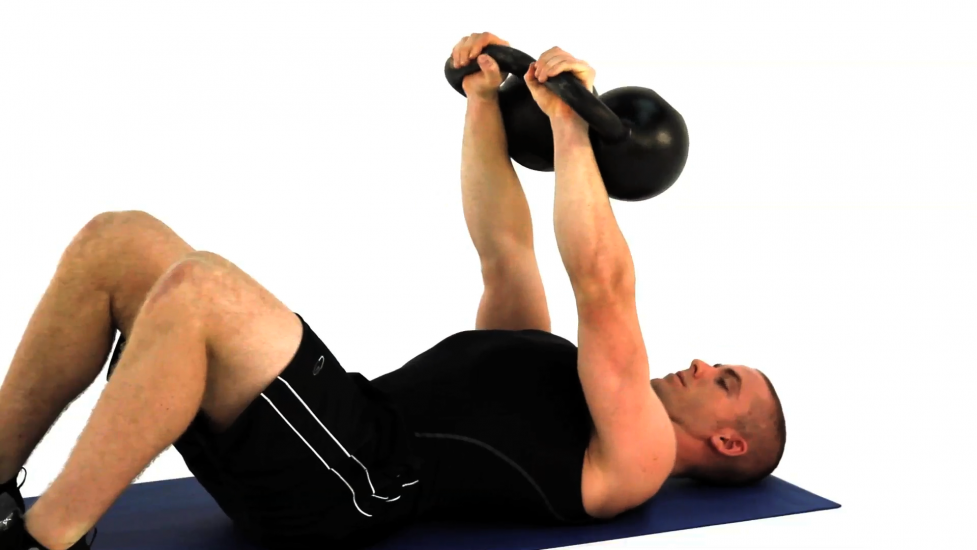
- Floor pressing “stops” the movement at 90 degrees which is usually where your shoulders “lose it” on a bench. This is a great exercise for those who need to build more stability in the movement and practice “pulling” their scaps back and down. It can be done with a barbell as well, with a low enough rack.
- Keep the same angle that you would with a regular bench.
- Slight arch in the lower back, but keep the ribs down by bracing (tightening) the abs.
- As you come down, pull your shoulder blades back, keeping your chest out and pausing on the floor before pushing back up.
The Pullup
Once upon a time, doing a pullup seemed like the epitome of accomplishment – if I could just do one! Now I can bang out quite a few, and I help others to do the same. I can distinctly remember hanging on a bar thinking that pulling myself up to it was going to be impossible. Lucky for me, I didn’t accept impossible, though it did take me awhile to understand the best way to go about actually helping someone get their first one. Pulling your bodyweight up requires quite a bit of strength and I think it is one of the BEST strength exercises ever. Just EVER. Not only is it a great pull movement (we all love pull more than push right?), but it is an athletic movement as well as a strength one. You can load it easily, do high rep, low rep, and one-arm. To differentiate, a chin-up is palms facing you, closer grip, you get to use your biceps more. A pull-up is palms away, arms wider, more back, easier to screw up. Pull-ups are harder and form can break down much faster; start with a chin-up position, and work your way up as your back strength grows.
Inverted Rows aka Body Rows (straight bar, TRX or gym rings)
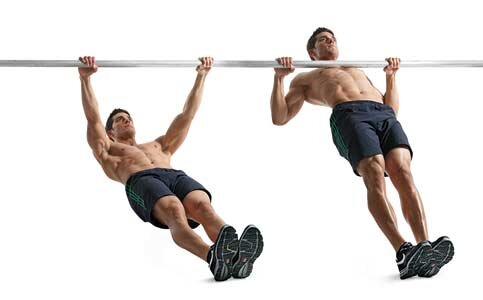
Bring the bar to you. Chop half your bodyweight off by keeping your feet on the floor or on a bench. This is one of the only good uses for a Smith Machine, too. Actually, I can almost love Smith Machines because I can adjust height easily for different levels for this exercise. You can also do these neutral grip style with gymnastic rings or TRX. This is a staple move for every beginner.
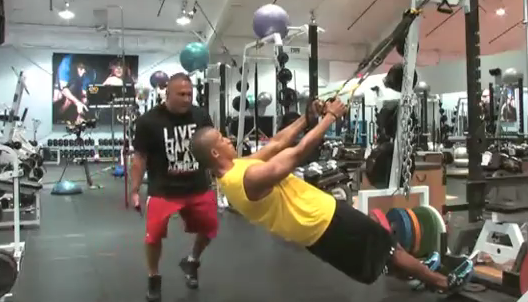
TRX/Gym Ring Rows are great for people with shoulder issues because of the neutral grip. You can make both styles scaleable by adjusting the feet.
More upright + legs bent and feet flat = easier
More horizontal + legs straight, feet flexed = harder
- Keep your hips down. Don’t let your legs help out too much. Bend your legs to make it easier, straighten them to make it harder. Don’t let your hips “rise” with the movement.
- Do lots of reps. Don’t stick to just 5-8. Do an easier variation and get 8-15 in. Than go harder, move the reps down, and repeat till you can “graduate” to assisted chins with a resistance band.
- Do them at least 2-3x a week. Depending on how you split your training, practice rows of some sort between benching, or other big movements. Rack up time under tension.
- You want to avoid “hunching over” at the top of the movement (for a full pull-up as well). I always cue keeping the eyes up and bringing the chest to the bar, not just getting the chin over. I was glad to see Eric Cressey echo the same tip, to avoid rolling that humerous in the shoulder socket forward. You want to avoid doing that for every upper body movement. I liked his coaching cue of “bring the elbows to the hips,” rather than bring the elbows back. This keeps you moving straight and keeps that shoulder in line.
Seated or Standing Cable Row and Close Grip Lat Pulldown
Building up your pulling strength is always a good idea. Forever. These two variations allow you to build up in weight progressively, which is great for beginners. Same ideas apply for form. For the close-grip lat pulldown, switch out the long handled bar for the short v bar, so your palms are facing eachother. The same handle you would use for the seated cable row. Why do I like these better than regular lat pulldowns? Less chance of that hunching over we were talking about (aka humeral head sliding anteriorly), which takes the focus off your back and just strains the shoulders.
Seated/Standing Cable Row
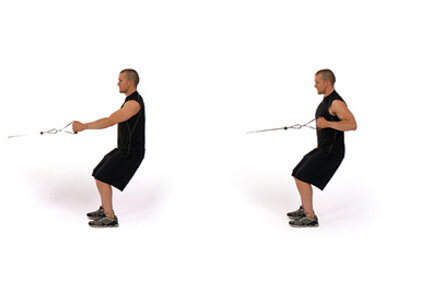
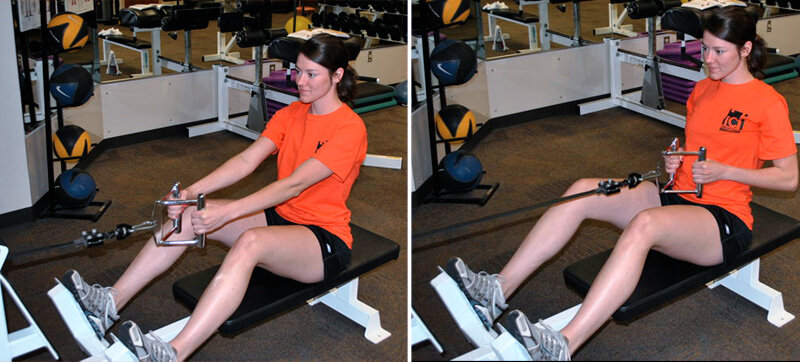
- Don’t let your elbows come too far back or too close to your body. This will again just make the head of your humerous (upper arm bone) slide anteriorly in your shoulder socket and not let your back muscles work properly.
- Stay straight, hands come toward the waist.
- Think about your lats and scapula. Pull your shoulder scaps together to initiate the movement.
- Don’t hunch forward at the start, and don’t use momentum back and forth to move the weight. Keep your body straight and in one place, and make your BACK pull it back.
Close Grip Lat Pulldown
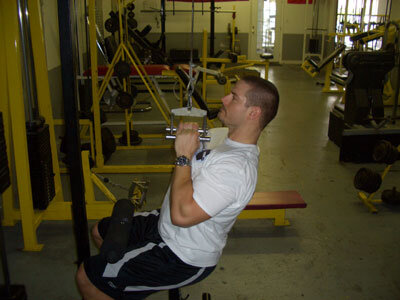
- Elbows to hips. Pull DOWN letting your elbows lead and think about your lats and back. Don’t hunch at the bottom and let the front of the shoulder roll forward. If you do, go lighter.
- You can shrug slightly at the top, but not excessively. Keep that shoulder from moving around TOO much. Don’t let the weight “yank” your arm back up.
Last thought:
For programming purposes, some easier variations will mean less load, and potentially less stimulus on the muscles. We like lower reps to build strength, but unless the load is significant enough, you won’t be doing much. Remember we want intensity more than volume. But as a beginner, intensity doesn’t mean much until you get the movements down and work enough. Switching out for a lighter variation usually means you have to work on the movement. Or train certain muscles to not take over, work on mobility, etc., etc. In those cases, higher reps are very beneficial as long as you can concentrate and not suffer form breakdown. If that’s the case:
- Do more sets, not more reps. So instead of 5 sets of 8, try 8 sets of 5. Or bang them out with great form 2-4 at a time, and rest less in between.
Adding more reps is great for getting the movement pattern down really well (practice makes perfect). Resting less can work well for bodyweight exercises like inverted rows and pushups, and/or add intensity without having to rack up lots and lots of reps where your form is at risk for breaking down significantly (like starting to “kip” your pushups). We still want to build strength, not endurance. So if you can bang out 10 good knee pushups, get on your feet!
Everyone can strength train effectively, no matter what your level. Don’t give up because what you see others do seems so beyond you or because a lift isn’t working for your body at that time. Work with your weaknesses and exploit your strengths.
Achieve your nutrition and training goals with Joy’s expertise and support.
Get started now
